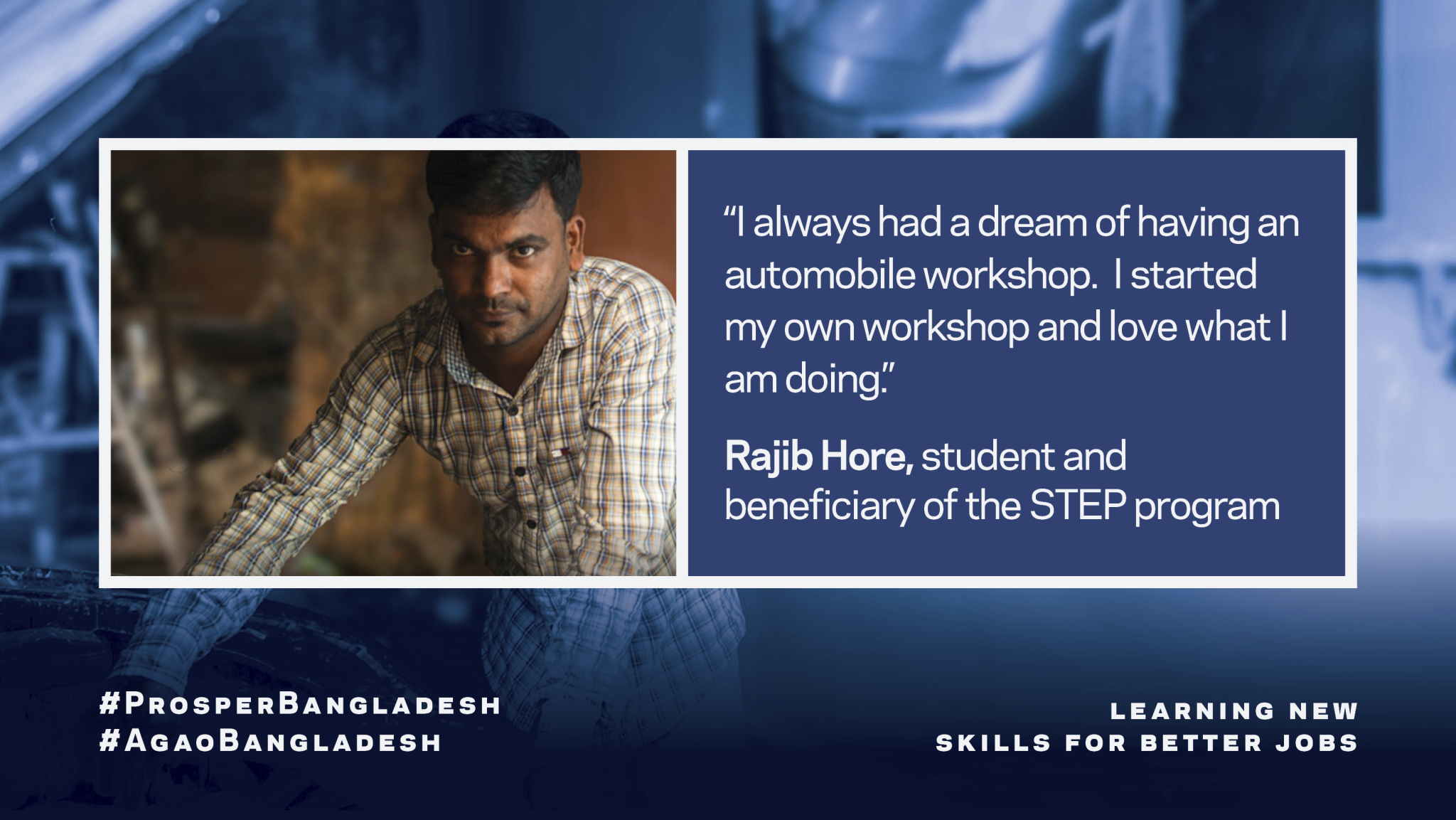Challenges – Enabling children to learn and thrive
Bangladesh has made remarkable gains over the past two decades by ensuring access to education, especially at the primary level and for girls. The country’s net enrollment rate at the primary school level increased from 80 percent in 2000 to 98 percent in 2015, and secondary school net enrollment is now around 54 percent, up from 45 percent in 2000. Furthermore, the percentage of children completing primary school is close to 80 percent, and Bangladesh has achieved gender parity in access, in addition to dramatic decreases in disparities between the highest and lowest consumption quintiles at both the primary and secondary levels.
Despite these and other achievements, however, a number of challenges remain:
Quality and relevance. Bangladesh’s workforce of 87 million is largely undereducated (only 4 percent of workers have higher than secondary education), and the overall quality of the country’s human capital is low. National learning assessments conducted by the Government of Bangladesh show poor literacy and numeracy skills among students – only 25 percent to 44 percent of the students in grades 5 through 8 have mastery over Bangla, English and math, and performance on these measures is especially low among poor students. In general, students have weak reading skills, and curricula, teaching approaches, and examination systems at all levels focus more on rote learning than on competencies, critical thinking, and analytical skills.
Low relevance of tertiary education and skills training is another issue of concern. The World Bank Enterprise Skills Survey 2012, for example, showed that employers believe graduates of Bangladesh’s higher education and training programs are inadequate for today’s and tomorrow’s labor market.
Equitable access. Repetition (the number of times students repeat grades) and dropout rates are still significant in Bangladesh, and only 50 percent of the students who enroll in first grade reach grade 10. Around five million Bangladeshi children between the ages of six and 13 – mostly from poor families, urban slums, and hard-to-reach areas – remain out of school. Women continue to lag behind men in higher secondary and tertiary education. In addition, student enrollment is progressively lower for the poor from the secondary to the tertiary levels.
Governance and management. Bangladesh’s Ministry of Primary and Mass Education (MoPME) is responsible for primary education (grades 1 to 5), and the Ministry of Education (MoE) oversees secondary and post-secondary education. The Government of Bangladesh recently announced that it will extend free and compulsory primary education to all students through grade 8, a policy that will require close collaboration between MoPME and MoE. Financing. Government spending on education as a share of the gross domestic product is around 2 percent, the second lowest in South Asia, and lower than in most other countries at similar levels of development.
Financing. Government spending on education as a share of the gross domestic product is around 2 percent, the second lowest in South Asia, and lower than in most other countries at similar levels of development.






